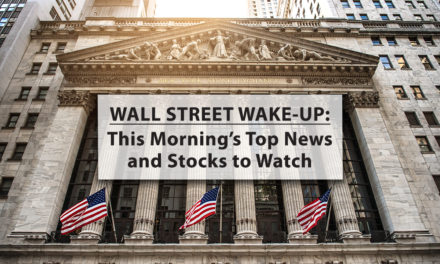Investors had expected big news when G-7 financial leaders from seven of the world’s largest economies met in an emergency session on Tuesday.
What they got was a lot of nothing.
Financial leaders from the U.S., Canada, Japan, France, Germany, the United Kingdom and Italy reiterated their commitment to using “all appropriate policy tools” to combat a potential economic slowdown. But they stopped short of providing any specifics on how they would do it.
Markets met the news with volatility as U.S. equities swung following the announcement. Both the Dow Jones Industrial Average and S&P 500 moved rapidly from positive to negative and back during Tuesday’s premarket session.
“It’s been met with disappointment in markets,” ING senior rates strategist Antoine Bouvet told Reuters. “The statement was in line with expectations, saying they will monitor the situation without any specifics.”
Statement Shows Lack of Power
While investors were seeking a stronger message, the lack of one points to just how little central banks can do to battle the negative impacts of the coronavirus.
U.S. equities rocketed upward Monday following last week’s mounting losses as Wall Street anticipated some kind of action from the Federal Reserve.
But Tuesday’s announcement muddied the waters.
“Alongside strengthening efforts to expand health services, G-7 finance ministers are ready to take actions, including fiscal measures where appropriate, to aid in the response to the virus and support the economy during this phase,” G-7 leaders said in a statement. “G-7 central banks will continue to fulfill their mandates, thus supporting price stability and economic growth while maintaining the resilience of the financial system.”
Analysts suggested the lack of specifics means there is little central banks can do at this point.
“G-7 communiques have certainly lost most of their weight in recent years. They just have a hodgepodge of things they want to do and things they are hoping to do,” OCBC head of research and strategy Selena Ling said. “I don’t think (talking) is enough to reclaim all the lost ground.”
What Happens Next?
U.S. markets were coming off their worst week since the financial crisis of 2008. All three markets entered correction territory — falling at least 10% from their recent record highs.
A massive rally on Monday seems to point in the direction of a rebound, but the lack of news from the G-7 may have halted that in its tracks.
Following the statement early Tuesday, stock futures retraced earlier gains while the U.S. 10-year Treasury yield moved higher, to 1.13%.
By about 10 a.m. EST, the Dow is down 182 points, or 0.7%, the S&P 500 is down 0.5% and the Nasdaq has lost about 0.6%.
“It’s not an economic shock, it’s a shock driven by a non-economic factor,” Sameer Goel, chief strategist for Deutsche Bank in Singapore said. “It’s still not clear how big the problem ultimately is, or could be, and until you know that, it’s hard to know how much medicine to apply to it.”





